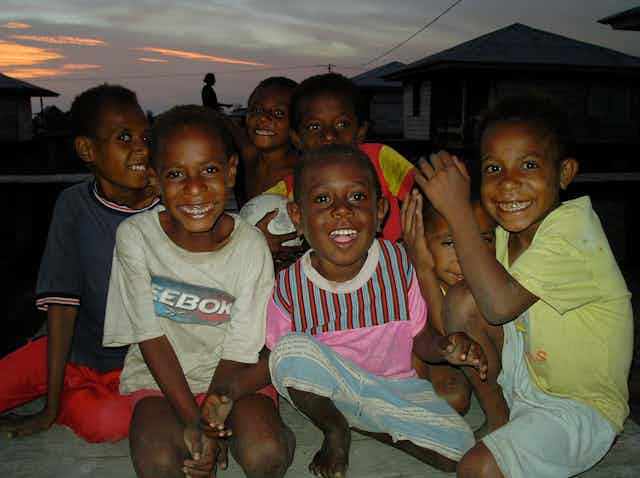The Indonesian government’s recent campaign to promote an upcoming sports event in Papua shows the country, with more than 1,300 ethnic groups, still struggles to ensure equal representation of its various cultures.
The event’s location, Indonesia’s easternmost province Papua, is home to the dark-skinned Melanesian Papuan people. Yet, the government appointed a white-skinned Javanese Instagram celebrity Nagita Slavina as the event’s ambassador. In the poster, the fair-skinned Nagita is seen wearing a Papuan headpiece and traditional costume.
Some have criticised Nagita’s appointment, accusing the government of cultural appropriation. The government chose someone from the dominant Javanese group, accounting for more than 40% of the population, to represent the minority Papuan ethnicity. One of the most vocal protests came from Arie Kriting, a comedian.
In the above picture, Arie Kriting demands the government to present Papuan women as the ambassador of the national event to avoid cultural appropriation.
Many have attacked Arie back, saying his protest is against the government’s intention to promote diversity with the sporting event.
I study and research media, technology and politics. I share Arie’s concern.
Through the campaign, the government promotes what anthropologists might call a banal diversity, where the authority misuses marginalised ethnic groups to present its message by appropriating their culture with a member of the majority.
Racism towards Papuans in Indonesia
People might find Arie Kriting’s criticism to be harsh. But Papuans have long been subject to economic and cultural discrimination.
This discrimination derives from Jakarta’s complicated history of conflicts with the local people. Indonesia has always had a level of racism towards its minority ethnic groups, particularly undervaluing the Papuans based on their skin colour or ethnic roots.
Read more: Let's talk more about racism in Indonesia
For decades, the government has abused Papua for its rich natural resources. Papuans have suffered economically from prolonged exploitation. A number of movements demanding Papuans’ independence from Indonesia have been launched, including the famous Free Papua Movement.
To tame the separatist narrative from the rebellious groups, the government has often associated Papuans with negative images; either as terrorists or as primitive people.
This racism is an every day reality for Papuans, in the media, and in real life where they face racist slurs such as “monkey”.
The 2019 riots throughout Papua were provoked by this racist language.
The government’s latest approach in dressing Nagita in Papuan dress its sports event campaign is another strategy to undermine Papuan values and narratives.
Papuan perspective
If the government wants to win the heart of the Papuans, it has to focus on the Papuan perspective.
Nagita in a Papuan dress does not show that the government values Papuans, it just appropriates their culture. It is offensiveness because it reproduces the dominant hierarchy that the light-skinned is the sovereign subject while the dark-skinned subject is the adornment.
The government’s decision to use light-skinned and straight-haired public figures keeps the dark, curly local values invisible.
Instead, it should use Papuan public figures, such as Nowela singer Nowela Elizabeth Auparay, weightlifter Lisa Rumbewas or actress Putri Nere, just to name a few.
The article has been updated to correct information on Arie Kriting’s origin. The previous version mentioned that he is from Papua, but he is actually from Southeast Sulawesi. We regret the error.


